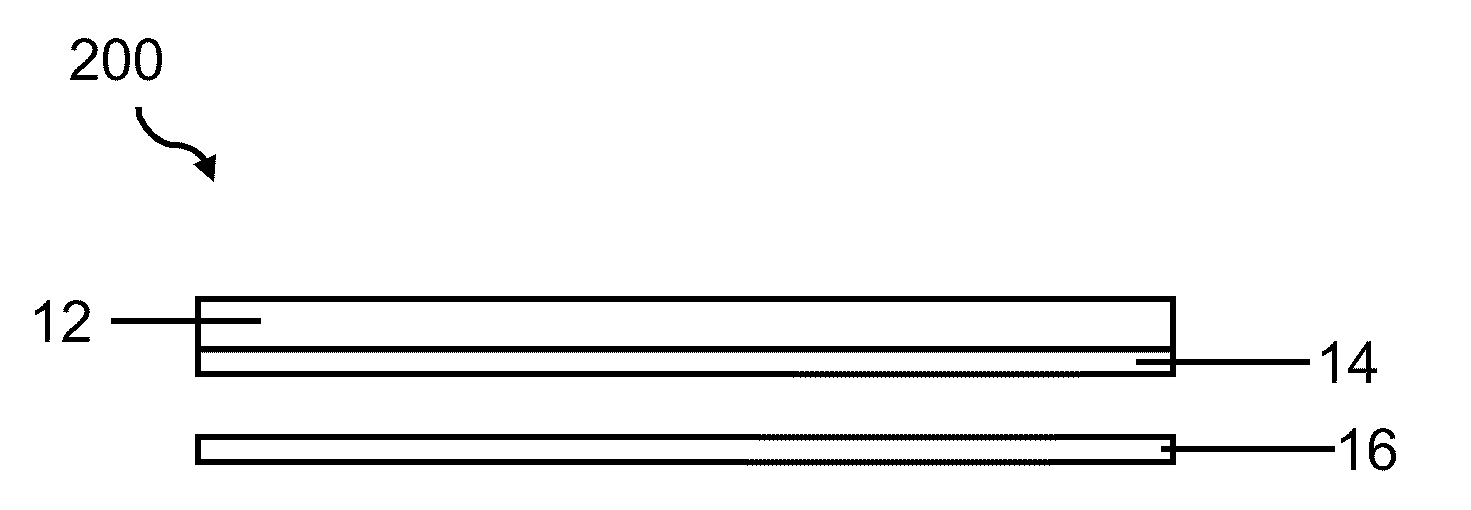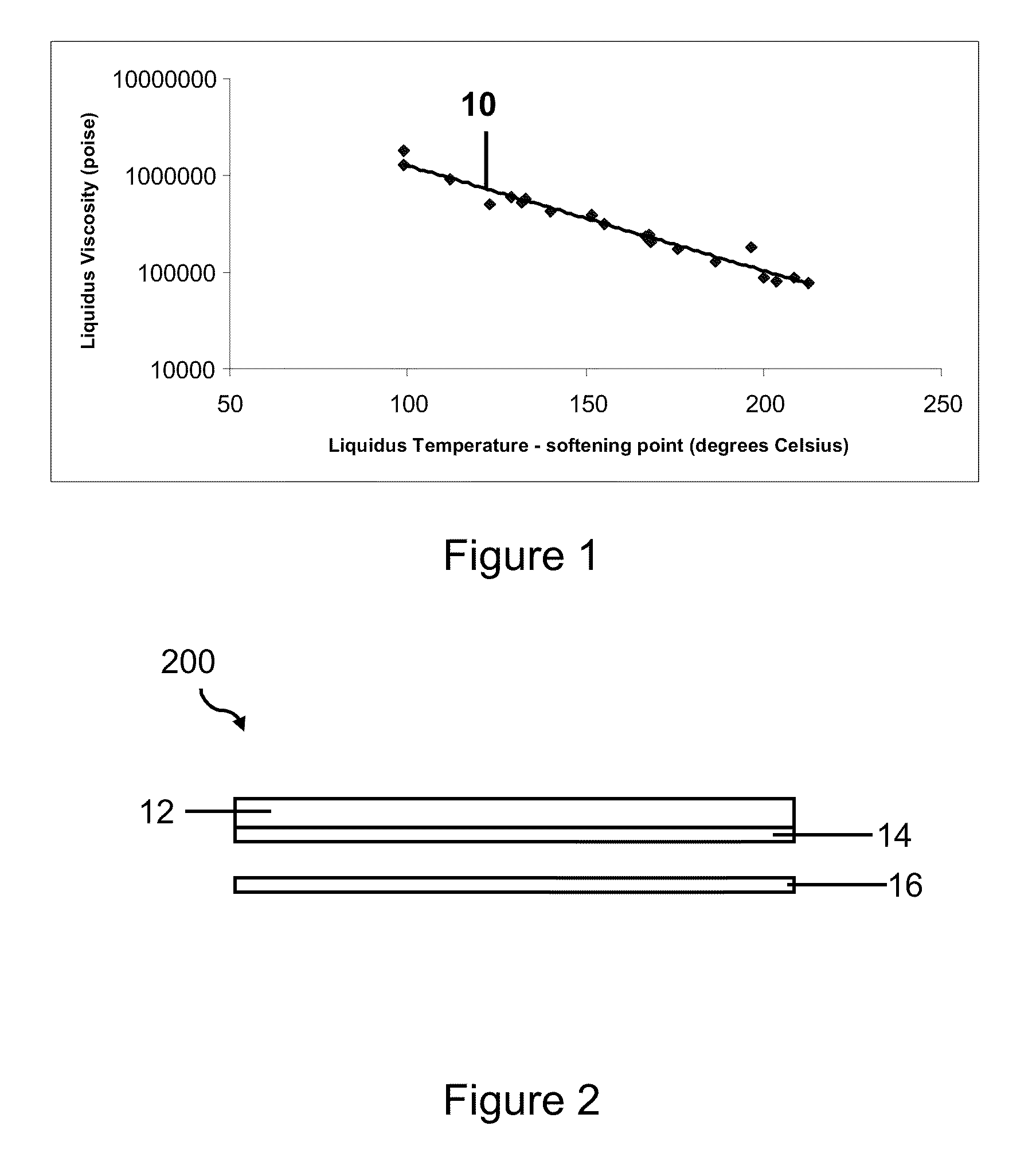Intermediate Thermal Expansion Coefficient Glass
a technology of thermal expansion coefficient and intermediate temperature, which is applied in the field of low alkali aluminoborosilicate glasses, can solve the problems of reducing the life of the platinum system, so as to accelerate melting, reduce the melting temperature, and increase the pull rate
- Summary
- Abstract
- Description
- Claims
- Application Information
AI Technical Summary
Benefits of technology
Problems solved by technology
Method used
Image
Examples
examples
[0106]The following is an example of how to fabricate a sample of an exemplary glass, according to one embodiment of the invention, as shown in Table 1. This composition corresponds to composition number 46 shown in Table 7.
TABLE 1oxidemol %SiO263.5Al2O310.7B2O310.3K2O2.3MgO4.4CaO5.2SrO3.5SnO20.1
In some embodiments, the total does not add up to 100%, since certain tramp elements are present at non-negligible concentrations.
[0107]Batch materials, as shown in Table 2 were weighed and added to a 4 liter plastic container:
TABLE 2batchBatch Componentsweightsand1713.42alumina486.27boric acid570.42Potassium carbonate143.05Magnesia78.62Limestone240.73Strontium carbonate234.2310% SnO2 and 90%6.92sand
[0108]It should be appreciated that in the batch, limestone, depending on the source can contain tramp elements and / or vary amounts of one or more oxides, for example, MgO and / or BaO. The sand is advantageously beneficiated so that at least 80% by mass passes 60 mesh, for example 80 mesh, for exa...
PUM
| Property | Measurement | Unit |
|---|---|---|
| Fraction | aaaaa | aaaaa |
| Fraction | aaaaa | aaaaa |
| Fraction | aaaaa | aaaaa |
Abstract
Description
Claims
Application Information
 Login to View More
Login to View More - R&D
- Intellectual Property
- Life Sciences
- Materials
- Tech Scout
- Unparalleled Data Quality
- Higher Quality Content
- 60% Fewer Hallucinations
Browse by: Latest US Patents, China's latest patents, Technical Efficacy Thesaurus, Application Domain, Technology Topic, Popular Technical Reports.
© 2025 PatSnap. All rights reserved.Legal|Privacy policy|Modern Slavery Act Transparency Statement|Sitemap|About US| Contact US: help@patsnap.com


